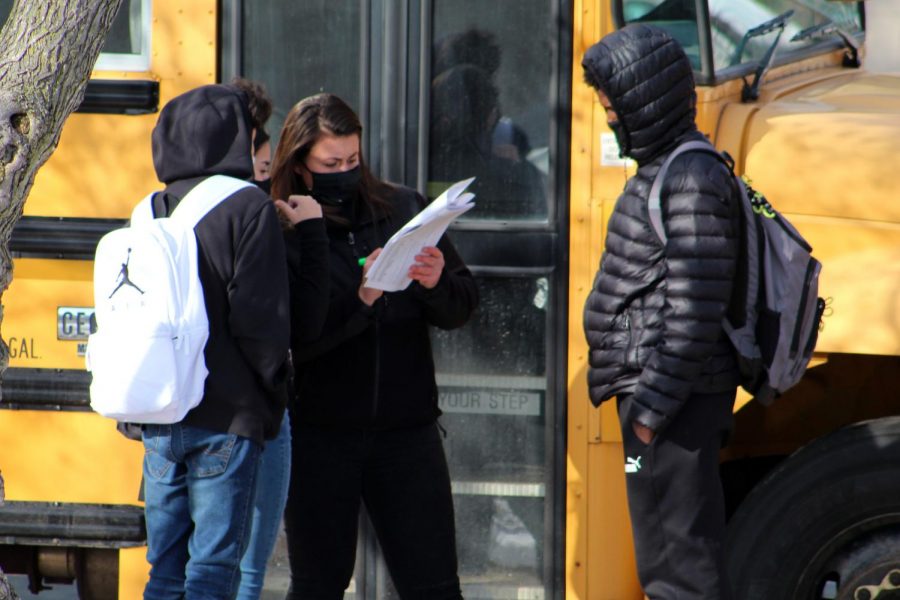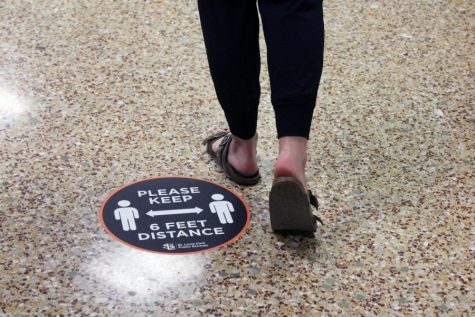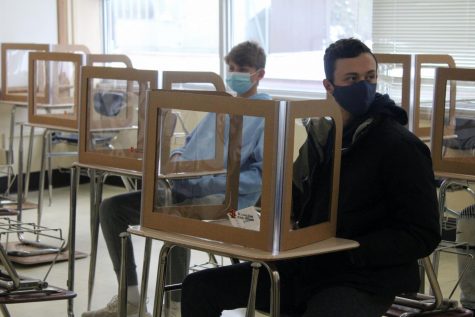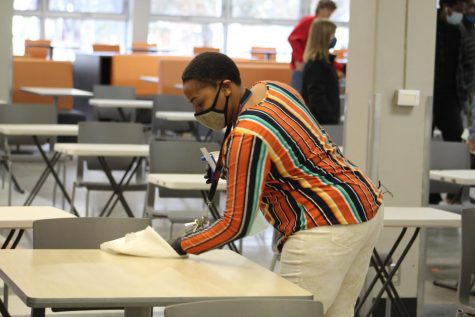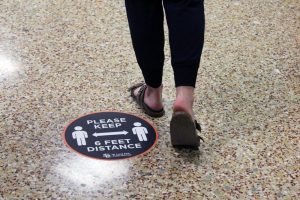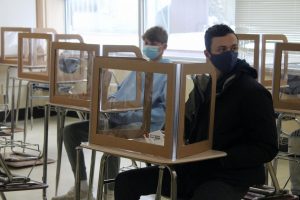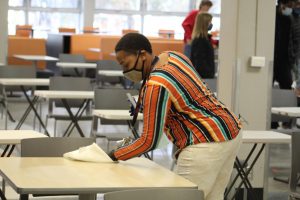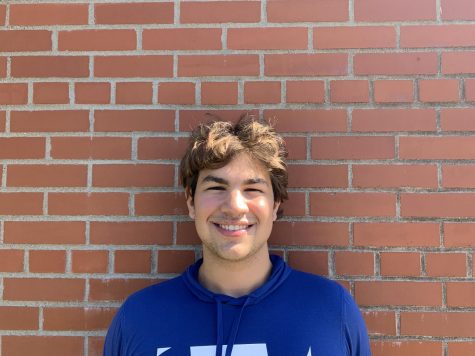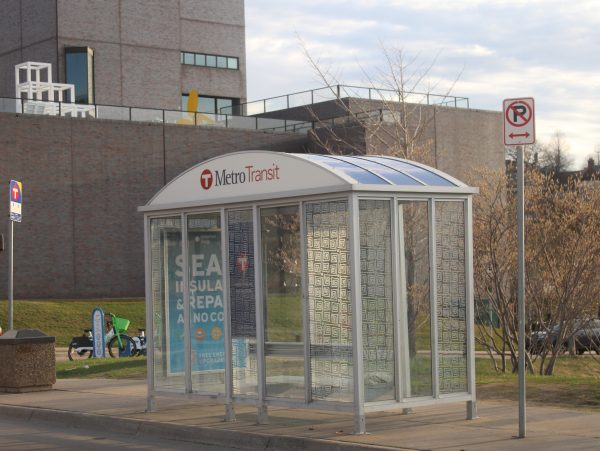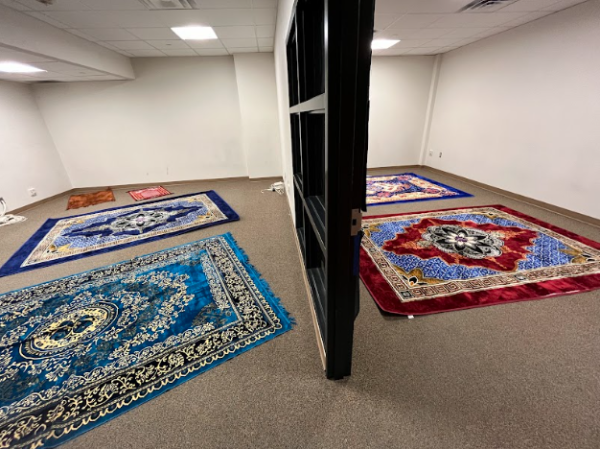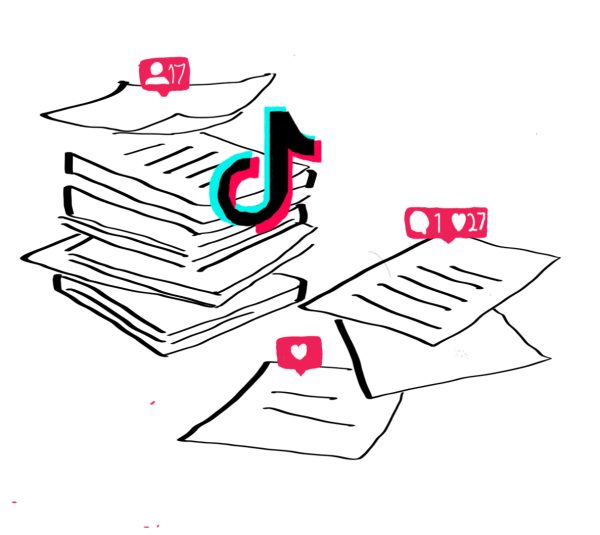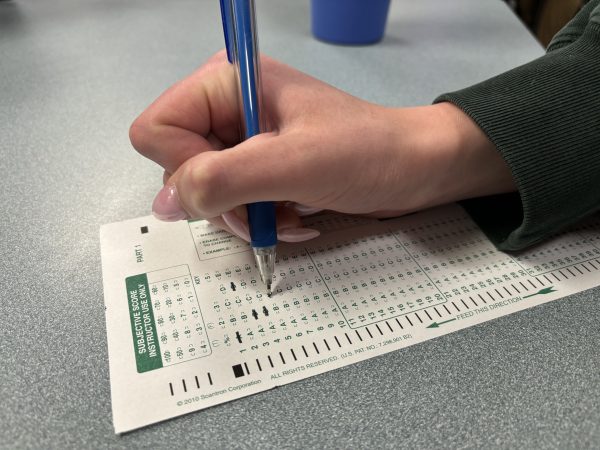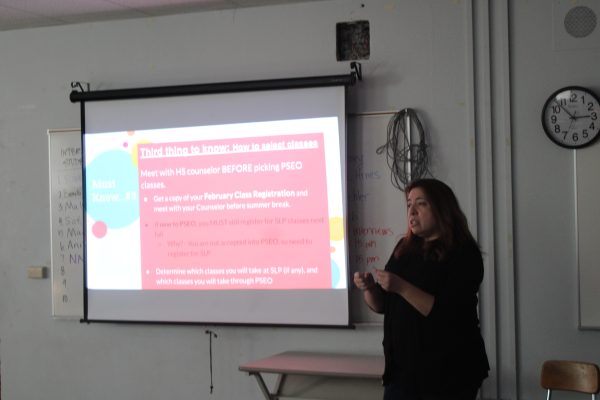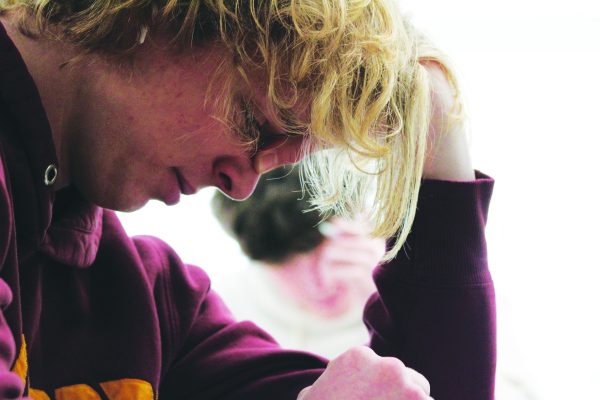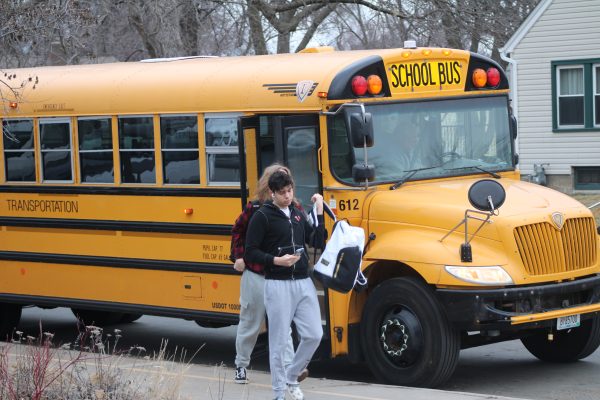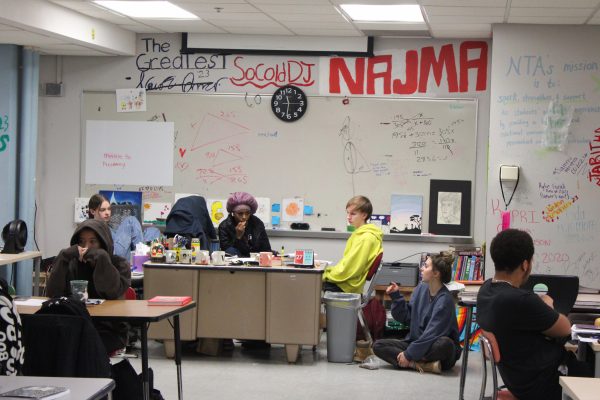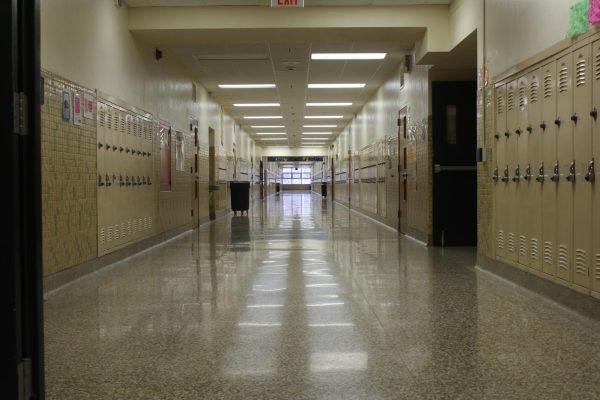Return to hybrid requires balancing once again
Return to in-person learning brings mixed feelings
Students figure out which bus to take home after the first day of hybrid learning Oct. 26. When hybrid learning returns Feb. 22, teachers will once again be tasked with balancing distance and in-person cohorts.
February 17, 2021
As students and teachers prepare for a second stint in the hybrid learning model, science teacher Al Wachutka said he is worried he will once again have to struggle with the balance of teaching students both in-person and over Zoom.
“I felt often that I had to make a choice between who I was focused on, whether I was focused on the kids at home, via Zoom, or those that were in class,” Wachutka said. “It was just difficult to decide where you put your attention.”
Hybrid will start Feb. 22 when 50 percent of students will return to the building, opposed to the 25 percent of each grade in the fall. Wachutka said he feels as if teaching will be just as difficult despite having more students in the classroom.
“One thing that is different is that there’ll be more student contact, but the logistics of what we do doesn’t change a whole lot and so we’re still asked to pay attention more to one group than the other,” Wachutka said. “I don’t feel like we’ve been given ‘here’s what you should do what would do your job best,’ that’s kind of been ‘figure this out.’”
Junior Truman Fillbrandt said last time he felt going into school was counterproductive, and hopes this time the lesson plan will be more advantageous for those in school.
“Whenever we went in, it was all computer-based, so you basically just do the stuff you do at home. The issue was it felt pointless except from a social aspect,” Fillbrandt said.
According to junior Murphy Fries, she thinks students at home were accommodated by their teachers adequately in the first hybrid stint and expects the same assistance this time.
“It’ll be a little bit difficult for the kids that are online all the time that aren’t going to come back to school because they won’t have that in person aspect that everybody else does,” Fries said. “But when we did (hybrid) in the fall, most of my teachers did a pretty good job of still being able to help all the kids that were still doing everything online.”
Despite the struggles that come with hybrid, history teacher Jill Merkle said she is sympathetic to administration as they are working hard to accommodate everyone. According to Merkle, optimistic that students and staff will work out the kinks of hybrid to find the best learning plan for all.
“People are excited for a change. I’m sensing that even though it’s going to be messy and people aren’t saying ‘keep us in distance,’” Merkle said. “I think people are feeling nervous but they’re being innovative with it, and as long as we can be flexible and give each other grace, then we’ll figure out a better system.”
Fillbrandt said one method of teaching he would like to see implemented is where students in each cohort get a different activity with the same content. According to Fillbrandt, his biology class has tried this method and he enjoys it.
“You have kids who are there do (an activity) and then everyone else do something like that for every class,” Fillbrandt said. “Once you’re in school you get to do a thing and then everyone that’s just doing distance gets like their own thing so it’s not pointless if you’re there.”
Wachutka said most teachers are dissatisfied with the need to balance between in-person and virtual students once again, as they feel that the teaching model required to keep up with all cohorts is ineffective.
“There’s a lot of people that know the feeling we had before and that feeling is still there— the frustration that this is not what’s best for kids,” Wachutka said. “I do think I would do a better job if it was one or the other, everybody’s either there or they’re asynchronous but now time will be split into both of those worlds. It’ll be split, and it’ll be spread pretty thin.”
Despite the stress and frustration, Merkle said it is all worth it to be back with her students.
“I’m feeling nervous but excited. I’m excited to see the kids again,” Merkle said. “As much as it was stressful to do hybrid last time, it was also probably my favorite two weeks of teaching this year.”



